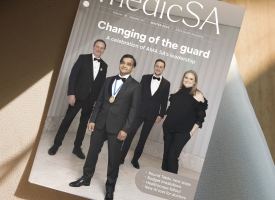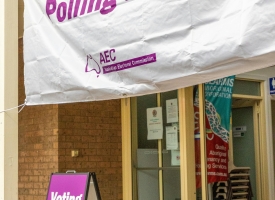AMA submission to the 2009-10 Federal Budget measure to cap Extended Medicare Safety Net benefits
The AMA submission to the Senate Community Affairs Committee inquiry into the Health Insurance Amendment (Extended Medicare Safety Net) Bill 2009 highlighted: the Bill provides a framework for the Government to systematically withdraw its funding of the Extended Medicare Safety Net (EMSN); the shortcomings of the Centre for Health Economics Research and Evaluation Extended Medicare safety net review report 2009 upon which the Government’s decisions to cap certain services were based; the absence of Government consultation with the medical profession to determine the real impact on patients. The AMA called for the Bill to be amended to include the following requirements: that the Minister be required to consult with the relevant medical groups about their fee structures and any proposal to introduce and/or change a EMSN cap before making future determinations to impose EMSN caps on particular medical services; that the Government be required to commission an independent evaluation of the impact of this measure and the associated determination containing the 2009-10 Budget caps by 1 January 2012, and for the evaluation to be tabled in Parliament as soon as it is completed.
Elton Humphery
Committee Secretary
Senate Standing Committee on Community Affairs
PO Box 6100
Parliament House
CANBERRA ACT 2600
Dear Mr Humphery
Health Insurance Amendment (Extended Medicare Safety Net) Bill 2009
Thank you for the opportunity to provide a submission to the Committee’s inquiry into the Health Insurance Amendment (Extended Medicare Safety Net) Bill 2009 (the Bill) and the draft Ministerial determination tabled by the Minister for Health and Ageing.
The effect of the Bill and the draft Ministerial determination is the withdrawal of Government financial assistance to patients through the Extended Medicare Safety Net (EMSN) for certain medical services. In developing this measure the Government has relied on analysis by the Centre for Health Economics Research and Evaluation at the University of Technology in Sydney (CHERE), in the Extended Medicare safety net review report 2009.
It is inevitable that patients will incur greater out-of-pocket costs for these services as a consequence of this measure. The extent to which individual patients will be affected is unclear because the Government is very reluctant to share meaningful data on the distribution of EMSN benefits.
However if we take for example, the CHERE analysis of obstetric charges by quartile, and apply the caps in the draft Ministerial determination, the AMA’s analysis is that out-of-pocket costs for normal obstetric deliveries will increase by around $466 for patients who are charged fees are in the bottom quartile, and around $1,706 for patients who are charged fees in the top quartile. The situation will be worse for some patients if their private health insurer does not pass on the increase in the Medicare rebate for in-hospital deliveries that has been budgeted to offset the effect of the EMSN caps.
The Government has sought to deflect criticism of the measure with an argument around the impact on patients who are charged “average” fees. Indeed, in respect of IVF treatment, the Minister for Health and Ageing quantified some of this, telling the Parliament that:
“The cost of IVF should not increase for most patients. On average, patients are charged around $6,000 per IVF cycle, yet there are some doctors charging in excess of $10,000 per cycle. Patients who see specialists who charge $6,000 or less for a typical IVF cycle will not be worse off under these changes.” 1
The IVF groups have indicated that they believe that patients who see specialists who charge $6000 for a typical IVF cycle will be significantly more out of pocket, and that they will provide details of these changes in out of pocket expenses in a separate submission.
In any event, the EMSN was never designed to deal with the average situation. On the contrary, it was designed to protect individuals and families from high out-of-pocket expenses when their need for these medical services was unusually high. The EMSN has helped many people get timely access to medical care that has quite likely prevented downstream costs.
The changes to the EMSN impair Medicare’s support for out-of-pockets costs for patients. While this measure may not have an impact on all patients, we believe that it will have a particularly harsh effect on some patients, some of whom will no longer be able to afford treatment. These patients will either seek treatment in the public system putting further pressure on our public hospitals, or not seek treatment at all. This is the harsh reality and it cannot be hidden behind claims that most EMSN benefits are paid in well-to-do areas.
While we acknowledge Government usually does not undertake consultation on budget measures, the AMA considers it is good practice for the Government to consult the medical profession when it is developing policy on Medicare rebates. So that there can be proper scrutiny of the practical effect of the measures in the Bill and the draft Ministerial determination, the Senate should require the Government to make publicly available its modelling on the EMSN caps.
The Bill provides a framework for the Government to systematically withdraw its funding of the EMSN, which is perhaps the unstated ultimate objective of the measure. In future, as soon as Medicare claims data shows certain services are attracting the highest proportion of EMSN benefits, we expect the Minister will make a new determination imposing a cap on the offending Medicare items. This Bill allows this to happen.
The Minister for Health and Ageing has claimed in the Parliament that doctors are taking advantage of the safety net.
“One of the reasons for this is that the amount of benefit available through the extended Medicare safety net is unlimited, and some specialists have taken advantage of this arrangement to increase their fees and their incomes, unfortunately with no particular benefit to the patient. The current nature of the safety net means that doctors feel little pressure to moderate their fees. Due to these fees rises for some services some patient out-of-pocket expenses have even increased as a result of the extended Medicare safety net. Unless we act now we will not be able to stop this increasingly silly situation and the extended Medicare safety net will become unsustainable.”
There can be no question that this goes to the heart of the Government’s concerns about the EMSN and it is the underpinning of the measure.
The AMA is concerned that the Government has placed considerable reliance on the CHERE report. We have a number of concerns with the methodology used by CHERE to reach the conclusions that doctors’ fees have increased, and in particular that obstetrics fees have increased by 267%.
Firstly, CHERE has assumed that Medicare data on medical fees charged for certain MBS items in 2003 is an accurate representation of the actual fees charged by doctors at that time, and has compared that to fees charged in 2007. The analysis does not take account of fees charged for services that were not covered by, and therefore not reported to, Medicare in 2003. In fact, patients were incurring out-of-pockets costs that the Government was not aware of. So for example, in the case of the purported 267% increase, these fees were not included in this calculation and is therefore misleading.
Secondly, the CHERE analysis takes no account of the real increases in the cost of delivering these services, and the shift to more complex services, over time.
Consequently, the AMA considers the CHERE analysis of the alleged inflationary effects of the EMSN are flawed and that CHERE’s claim that “the EMSN was directly responsible for a 2.9% increase in fees per year” is incorrect. Attachment A sets out our fundamental concerns with the CHERE report. In short, we believe that CHERE did not take proper account of the difference between Government rebates and the real increase in the cost of delivering medical services over time. Nor in their analysis of “average fees”, did they take account of the change in the complexity of services as part of their explanation for their findings.
Finally, we have further concerns about the Government’s modelling of the effect of the measures in the Bill and draft Ministerial determination. EMSN benefits are only payable in respect of services rendered out of hospital and have never applied to in-hospital services. The measures in the Bill are intended to address the payment of EMSN benefits for services provided outside the hospital setting. Yet the draft Ministerial determination provides EMSN caps for Medicare Benefits Schedule (MBS) items that are provided in hospital, suggesting that the Government’s modelling of the effect of the measures erroneously includes some notional allocation of EMSN benefits for these same services. The Government should be asked to explain why it has done this.
Summary
The AMA considers the measure to be poorly conceived and weakly supported by the evidence (and the faulty analysis in the CHERE report). It follows that the implications of the measure are poorly understood by the Government and the Department and even more poorly explained.
Notwithstanding these significant methodological and policy concerns, the Government has made clear its intention to introduce the capacity to cap EMSN benefits for various medical services over time, and the Bill and draft Ministerial determination reflect the first tranche of these cuts as announced in the Budget. This Bill will have a negative impact for patient out-of-pocket costs for medical services beyond those that are listed in the draft Ministerial determination currently before the Parliament and requires amendment to protect patients in the future from poor policy decisions.
Recommendation
The AMA recommends the Bill be amended to include an additional provision that requires the Minister to consult with the relevant medical groups about their fee structures and any proposal to introduce and/or change a EMSN cap before making future determinations to impose EMSN caps on particular medical services. The purpose of the consultation would be to ensure that caps and other changes are accurately modelled to fully understand the impact on patients based on a range of fee structures that apply to different practice scenarios. It would ensure the Government is fully cognisant of the potential impact of an EMSN cap before making a decision to implement it.
The AMA also recommends that the Bill be amended to include a requirement for Government to commission an independent evaluation of the impact of this measure and the associated determination containing the 2009-10 Budget caps by 1 January 2012, and for the report to be tabled in Parliament as soon as it is completed.
I look forward to an opportunity to appear before the Committee.
Yours sincerely
Dr Andrew Pesce
President
_________________________________________________
1 House of Representatives Hansard, 15 June 2009.
We draw the attention of the Senate to the following extract from page VI of the report:
“Since the introduction of the EMSN, average fees have increased by around 4.2% per year (excluding general practice and pathology). This increase is over and above the rate of inflation. We estimate that the EMSN is responsible for 70% of this increase. That is, we estimate that the EMSN was directly responsible for a 2.9% increase in fees per year.
These fee increases have resulted in considerable leakage of government benefits towards providers’ incomes, rather than reduced costs for patients.”
In relation to these claims, we make the following observations:
- CHERE has completely failed to understand the effect of compositional change on “average fees” and has therefore misconstrued the rate of price increase. The Medicare data shows very clearly that there is an ever-changing mix of services being delivered year by year, with a very clear movement towards more complex (and more costly) services. It is this factor, spurred by advances in technology, which is predominantly responsible for an increase in “average” fees. Indeed, there is a strong demand for higher quality services based on new technologies (an MRI scan may cost more than an X-Ray but it provides a great deal more information and can therefore underpin better patient outcomes). Another driver is the ever-increasing complexity of the work, with a higher level of chronic illness and higher rates of co-morbidities reflecting the health status of an ageing population.
- The CHERE report uses CPI as a benchmark, and implies that any increase in fees above CPI is “excessive”. However, the rate of increase in CPI bears no relationship at all to the costs of medical practice. Medicine is a highly labour intensive activity. While it varies between peer groups, up to 80% of medical practice costs are related to labour costs. In recent years, increases in average earnings for working Australians have far outstripped CPI increases. The Wage Price Index or average earnings from the national accounts (both published by the Australian Bureau of Statistics) would provide a more appropriate benchmark. Both have risen by about 4% p.a. in recent years, far more than the Government’s indexation of the Medicare schedule fee.
- Finally, the CHERE analysis completely ignores practice costs, and treats the increase in average fees as a proxy for doctors’ incomes. That is not valid. The income doctors’ generate from providing professional medical services must service their practice costs. For example, in the case of assisted reproduction technology (ART), the labour component includes nurses, scientists, technicians and councillors, and there is significant infrastructure to provide the service to patients. These practice costs, which are met entirely from the fee charged by the ART specialist, vary considerably depending upon the size, nature and geographical location of the practice.


